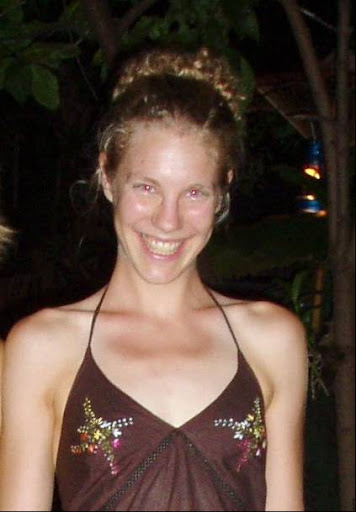Trekking Tips
As mentioned in my post yesterday, I "trekked" to the biggest waterfall in Thailand, also the sixth-largest in the world, last weekend. The waterfall is named Nam Tok Thee Lor Su, which means "Waterfall Waterfall". Why, you ask? Nam Tok = Water Fall in Thai language, while Thee Lor Su = waterfall in Karen language.
The trek started at about 9 am from the front door of the resort that organizes the treks (Um Phang Hill), where we (myself, a couple from Switzerland, and a family from the Netherlands) piled into rafts and set off down a tributary of the Mekong river, which forms the Thai-Laos border farther to the north. The rafting was a bit sketchy compared to my experience on the Mae Taeng. We had two river guides (different from our trekking guides, who were also along on this portion of the trip), who I think were about 14 years old each, one at the front of the boat and one at the back. I don't think anyone taught these kids how to paddle, because the concept of ruddering didn't seem to be in their paddling vocabulary. Needless to say, we swiped the bank more than a few times on the four hour float. Luckily the river was tame and there were basically no rapids to worry about.
We had two english speaking trek guides. One was named Augustine. He is a Burmese-born man who had to flee to Thailand to escape the government in Burma. Both his parents were killed at the hands of the military dictatorship in Burma. A great communicator (he speaks Burmese, Karen, Thai, English, and a spattering of some other languages as well) Augustine was quite a character, doing impressions of silly tourists he has guided on past trips. The other guide was named Tu Tu, or "Tommy" to English speakers. He is also from Burma, but makes his home in Thailand because of political and economic reasons. We had some interesting conversations about Burmese-Thai relations during the trip, and I slowly came to realize that the concept of a border and a nation is very different in this area of the world than in North America. Very serious stuff, indeed.
After disembarking from the rafts, we walked for about three hours to the first night's camp. Our "trail" was actually a road through beautiful primary wet tropical forest:

The first night we camped at the Thee Lor Su campground, which is apparently filled with Thai tourists during the high season (december) but was empty except for a few other farang on treks the night we stayed. After a fabulous dinner and rousing game of poker using green tree leaves as money, we woke early the next morning and walked 1.5 km to the waterfall. The falls were impressive -- huge -- wet -- cold -- and not very photographable due to the mist in the air. We returned to the camp after a quick dip in the pools below the falls and hiked three hours to the next night's destination, a Karen hilltribe village.
The hike was muddy. The village was impressive. Everyone lives in bamboo huts (floors and walls made of bamboo, roofs made of metal or leaves) and the community is almost self-sustainable, growing its own vegetables, rice, and meat. Transportation is via foot, elephant, or motorbike in the dry season, and the nearest paved road is at least an hour from the village. This particular hill tribe village has been in Thailand for only about 30 years -- the people moved from Burma for political reasons but maintain their native Karen language, dress, and customs.
After spending the night in a bamboo hut and waking up around 5 am to the sound of Karen people pounding rice, we set off on the last leg of our journey -- a four hour elephant ride over the hills. Here is a picture of two of the elephants:

My elephant and mahout (elephant guide) are on the right of the picture. Each elephant wears a wooden basket on it's back, and passengers sit in the basket while the guide sits behind the elephant's ears. I shared my basket with two young girls from the Netherlands. In Chiang Mai there was plenty of elephant trekking, but the elephants there were in poor condition (skinny, with sores). Here, the elephants are treated very well. Each night the mahout lets the elephant free in the forest to eat. The next morning he calls the elephant back for the day's work.
The internet cafe is closing, so I have to go now, but here is a final photo of (left to right), me, Augustine, Tu Tu, and the family from the Netherlands the morning we left Um Phang:

More to come on Myanmar and Sukkothai soon...


0 Comments:
Post a Comment
<< Home